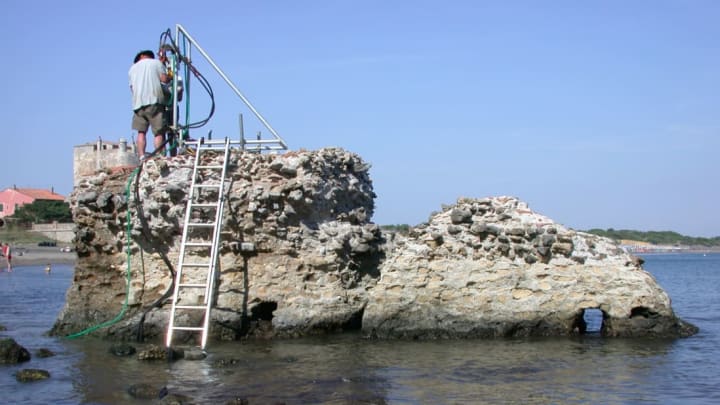Any seaside structure will erode and eventually crumble into the water below. That’s how things work. Or at least that’s how they usually work. Scientists say the ancient Romans figured out a way to build seawalls that actually got tougher over time. They published their findings in the journal American Mineralogist.
The walls’ astonishing durability is not, itself, news. In the 1st century CE, Pliny the Elder described the phenomenon in his Naturalis Historia, writing that the swell-battered concrete walls became "a single stone mass, impregnable to the waves and every day stronger."
We know that Roman concrete involved a mixture of volcanic ash, lime, seawater, and chunks of volcanic rock—and that combining these ingredients produces a pozzolanic chemical reaction that makes the concrete stronger. But modern cement involves a similar reaction, and our seawalls fall apart like anything else beneath the ocean's corrosive battering ram.
Something else was clearly going on.
To find out what it was, geologists examined samples from walls built between 55 BCE and 115 CE. They used high-powered microscopes and X-ray scanners to peer into the concrete's basic structure, and a technique called raman spectroscopy to identify its ingredients.

Their results showed that the pozzolanic reaction during the walls' creation was just one stage of the concrete toughening process. The real magic happened once the walls were built, as they sat soaking in the sea. The saltwater did indeed corrode elements of the concrete—but in doing so, it made room for new crystals to grow, creating even stronger bonds.
"We're looking at a system that's contrary to everything one would not want in cement-based concrete," lead author Marie Jackson, of the University of Utah, said in a statement. It's one "that thrives in open chemical exchange with seawater."
The goal now, Jackson says, is to reproduce the precise recipe and toughen our own building materials. But that might be harder than it sounds.
"Romans were fortunate in the type of rock they had to work with," she says. "They observed that volcanic ash grew cements to produce the tuff. We don't have those rocks in a lot of the world, so there would have to be substitutions made."
We still have a lot to learn from the ancient walls and their long-gone architects. Jackson and her colleagues will continue to pore through Roman texts and the concrete itself, looking for clues to its extraordinary strength.
"The Romans were concerned with this," Jackson says. "If we're going to build in the sea, we should be concerned with it too."
